The Importance of Meeting Management Software for Trade Shows
Trade shows are essential events for businesses looking to engage with prospects, generate leads, and close deals. However, organizing meetings at these events can be a logistical challenge. From scheduling conflicts to missed opportunities, poor meeting management can cost businesses valuable time, resources, and revenue.
To overcome these challenges, many event organizers are turning to meeting management software to streamline the process. By automating scheduling, managing meeting requests, and improving communication, this software can be a game-changer for trade show success.
However, not all meeting management tools are created equal. When selecting software for your trade show, it’s essential to understand which features are critical to optimizing your meetings and maximizing ROI.
5 Key Features to Look for in Meeting Management Software
1. Seamless Integration with Calendar Tools
One of the most critical features of meeting management software is its ability to integrate seamlessly with widely used calendar tools like Google Calendar, Outlook, and Microsoft Exchange.
Without this integration, your team might face scheduling conflicts, double-booked appointments, or missed meetings due to misaligned calendars. A robust meeting management platform ensures that your team’s availability is in sync with the schedules of all involved parties—whether it’s internal sales teams, product specialists, or external attendees.
By syncing directly with calendar tools, the software eliminates the risk of double bookings and ensures your meetings are efficiently scheduled without the hassle of back-and-forth emails or manual updates.
2. Real-Time Availability Tracking
At large trade shows, team members’ schedules can quickly become cluttered, making it difficult to know who is available for meetings and when. Real-time availability tracking is a must-have feature for any meeting management platform.
This feature gives event organizers, sales reps, and team members visibility into real-time availability, allowing for quick scheduling and minimizing conflicts. It can also prevent meeting overlap, ensuring that each participant can meet with the right people at the right time.
For global trade shows, this feature is even more crucial. Different time zones and tight schedules can complicate meeting coordination, but real-time availability tracking ensures all participants can find a convenient meeting slot, regardless of location.
3. Customizable Meeting Types and Scheduling Preferences
Not all meetings at trade shows are the same. From quick demo sessions to in-depth executive briefings, the ability to customize meeting types and scheduling preferences is an essential feature in any meeting management software.
The software should allow event organizers to:
- Define different types of meetings (e.g., executive, demo, networking).
- Set meeting duration and buffer time for transitions between sessions.
- Allow sales teams to choose specific meeting locations or virtual meeting options.
This customization ensures that meetings are aligned with business goals, reduces the likelihood of meetings running over time, and maximizes the impact of every interaction.
4. Automated Meeting Requests and Notifications
Manually sending meeting requests, tracking responses, and following up with attendees can become overwhelming, especially at busy trade shows. Automated meeting requests and notifications streamline this process by sending out invitations, confirmations, and reminders without manual intervention.
Automating meeting requests means that you can:
- Send invitations at scale without losing the personal touch.
- Set up reminders for both attendees and internal teams to minimize no-shows.
- Automatically reschedule meetings if conflicts arise.
This feature not only saves time but also ensures that attendees are kept informed, leading to higher attendance rates and better outcomes.
5. Analytics and Reporting Tools
A successful trade show isn’t just about scheduling meetings—it’s about tracking results. A meeting management platform with built-in analytics and reporting tools allows you to assess the effectiveness of your meetings and measure their impact on your overall event ROI.
With this feature, you can track:
- The number of meetings scheduled and completed.
- Conversion rates—how many meetings turned into opportunities or sales.
- Revenue influence, showing how meetings contributed to pipeline growth.
By having access to detailed data, event organizers can refine their strategies for future events and make more data-driven decisions about where to allocate resources.
Why These Features Matter for Trade Show Success
Trade shows are high-stakes events, and your meeting strategy can make or break your ROI. Selecting the right meeting management software with these five key features ensures that your event runs smoothly, your team is aligned, and your meetings are productive.
With seamless calendar integration, real-time availability tracking, and customizable meeting preferences, you’ll be able to optimize every conversation. Automated meeting requests and follow-ups make scheduling effortless, while analytics and reporting tools provide the data you need to measure success and justify your event investment.
If you want to maximize your trade show meetings and drive stronger lead conversions, investing in the right meeting management platform is critical.
Ready to Enhance Your Meeting Management?
If you’re ready to take your trade show meetings to the next level, meeting management software with these key features is the solution.
Contact us today to explore how our platform can streamline your event strategy.




